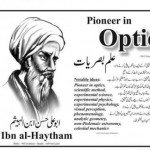- This topic has 18 replies, 1 voice, and was last updated 2 years, 2 months ago by
Rajbir Singh.
-
AuthorPosts
-
-
February 15, 2016 at 11:12 am #29738
 Idahor EmmanuelParticipant
Idahor EmmanuelParticipantHi, I would like an example of the implementation of OFDM on optisystem using IQ modulator and Mach-Zehnder modulation with BER of 0. Note: Not coherent detection.
-
February 15, 2016 at 11:52 am #29750
 alistuParticipant
alistuParticipantHi Idahor,
Please see if the example available in OptiSystem sample files is o any help to you. You can find the example “OFDM Modulator” at: OptiSystem 13 Samples\Component sample files\Transmitters Library\Modulators\Electrical. There is also another sample named “OFDM demodulator” that has the exact same implementation.
Regards
-
March 7, 2016 at 11:42 pm #31807
 Ranjeet KumarParticipant
Ranjeet KumarParticipantHi idahor,
Here i am uploading OFDM pon of four transmitter using unidirectional fiber. -
May 6, 2016 at 10:29 am #38965
 umer ashraf waniParticipant
umer ashraf waniParticipanthttps://www.google.co.in/url?sa=t&rct=j&q=&esrc=s&source=web&cd=9&cad=rja&uact=8&ved=0ahUKEwjkjp6j1MXMAhWhXaYKHR-jBnYQFghZMAg&url=http%3A%2F%2Fwww.ijera.com%2Fpapers%2FVol5_issue2%2FPart%2520-%25202%2FA502020104.pdf&usg=AFQjCNHmY7FoqKq-ZeL-Ri6M0W6YZNAyyA&sig2=ipK1KSquaj9kBIX5xWFxEg&bvm=bv.121421273,d.dGY
https://www.google.co.in/url?sa=t&rct=j&q=&esrc=s&source=web&cd=2&cad=rja&uact=8&ved=0ahUKEwjkjp6j1MXMAhWhXaYKHR-jBnYQFggmMAE&url=http%3A%2F%2Foptiwave.com%2Fapplications%2Fcoherent-optical-ofdm-2%2F&usg=AFQjCNGMC15qPO9kWkbY9eyZi0bUJCidig&sig2=PuxU_BRxukfpn-qosh5JSg&bvm=bv.121421273,d.dGY
https://www.google.co.in/url?sa=t&rct=j&q=&esrc=s&source=web&cd=5&cad=rja&uact=8&ved=0ahUKEwjkjp6j1MXMAhWhXaYKHR-jBnYQFgg7MAQ&url=http%3A%2F%2Ffile.scirp.org%2Fpdf%2FOPJ_2013061417245571.pdf&usg=AFQjCNF46mtHEZSWuVREPv1yADB7y9DxIg&sig2=PiI8ENTEpeFrnzdzKbzA5A&bvm=bv.121421273,d.dGY
https://www.google.co.in/url?sa=t&rct=j&q=&esrc=s&source=web&cd=7&cad=rja&uact=8&ved=0ahUKEwjkjp6j1MXMAhWhXaYKHR-jBnYQFghKMAY&url=http%3A%2F%2Fwww.ict-accordance.eu%2Fknowledge_base%2FOptical_OFDM_Design_-_Direct_and_Coherent_Detection&usg=AFQjCNE9Y2u1av_dpiEi-yagz4hnSv5FWQ&sig2=YvmH3i4RlEPdz8TZqt3-2w&bvm=bv.121421273,d.dGY
https://www.google.co.in/url?sa=t&rct=j&q=&esrc=s&source=web&cd=8&cad=rja&uact=8&ved=0ahUKEwjkjp6j1MXMAhWhXaYKHR-jBnYQFghQMAc&url=http%3A%2F%2Fwaset.org%2Fpublications%2F4837%2Finvestigation-of-i-q-imbalance-in-coherent-optical-ofdm-system&usg=AFQjCNGxdNUq3nrFCe_NDmtNv1Z7aA1_kw&sig2=Kym1b0s9NlYc-QeqsuUvpg&bvm=bv.121421273,d.dGY
https://www.google.co.in/url?sa=t&rct=j&q=&esrc=s&source=web&cd=14&cad=rja&uact=8&ved=0ahUKEwifx5DB1MXMAhWi5qYKHREVD-44ChAWCCwwAw&url=http%3A%2F%2Fwww.academia.edu%2F7712092%2FPerformance_Investigation_of_OFDM_Technology_for_Radio-over-Fiber_Systems&usg=AFQjCNF4Ol9hBm5SJL8RO43o8JSfNVVBnw&sig2=0J5wqlM0_PrYP3yAo7dXcg&bvm=bv.121421273,d.dGY
https://www.google.co.in/url?sa=t&rct=j&q=&esrc=s&source=web&cd=19&cad=rja&uact=8&ved=0ahUKEwifx5DB1MXMAhWi5qYKHREVD-44ChAWCE0wCA&url=http%3A%2F%2Fdocsdrive.com%2Fpdfs%2Fansinet%2Fitj%2F0000%2F42032-42032.pdf&usg=AFQjCNEz_vhsmPVl4yHKh4HPinsg2xhv_g&sig2=EC56ZDLQhmizWT7JnSjgOQ&bvm=bv.121421273,d.dGY -
May 6, 2016 at 1:17 pm #38967
 Karan AhujaSpectator
Karan AhujaSpectatorHello
I would like to mention that Orthogonal Frequency Division Multiplexing (OFDM) is a Multi Carrier Modulation (MCM) technique which uses many subcarriers to carry the information. The main advantage of the OFDM is its ability to overcome channel dispersion. Also, OFDM has the ability to transmit information with high data rates which has made it popular. OFDM has been used in many different applications in the RF domain
such as digital audio broadcasting (DAB), digital video broadcasting (DVB), and Wireless Local Area Networking (WLAN). OFDM was introduced to
optical domain in 2005, and has since been studied and investigated in two main techniques classified according to the detection scheme. The first technique is the direct detection optical OFDM (DDOFDM) and the second technique is the coherent optical OFDM (CO-OFDM). A direct detection optical OFDM aims for simpler transmitter or receiver than CO-OFDM for lower costs. DD-OFDM has an advantage that it is more immune to impulse clipping noise. Coherent Optical OFDM (COOFDM) is the next generation technology for optical communications since it integrates the advantages of both coherent systems and OFDM systems. COOFDM provides linear detection and high spectral efficiency. The CO-OFDM system has the ability to overcome many optical fiber restrictions such as Chromatic Dispersion (CD) and Polarization Mode Dispersion (PMD). Moreover the system is resistant to inter-symbol interference (ISI) because of the cyclic prefix code.
I hope this will be helpful.
For your convenience i am attaching link of one paper which may be useful to you.
http://www.ijera.com/papers/Vol5_issue2/Part%20-%202/A502020104.pdf
regards -
May 6, 2016 at 1:19 pm #38968
 Karan AhujaSpectator
Karan AhujaSpectatorI also want to add that a generic CO-OFDM system includes five basic functional blocks: OFDM transmitter, RF to optical (RTO) up-converter, optical link, optical to RF (OTR) down-converter, and OFDM receiver. A 10 Gbps coherent 512-subcarrier 4-QAM OFDM system schematic is shown, however the input data for the OFDM modulator can have different modulation formats such as BPSK, QPSK, QAM, etc. At the transmission block, both modulation and multiplexing are achieved digitally using an inverse fast Fourier transform (IFFT). The subcarrier frequencies are mathematically orthogonal over one OFDM symbol period. A CW laser and two Mach-Zehnder modulators are used to up-convert the RF data to the optical domain. The signal is then propagated through the optical link and becomes degraded due to fiber impairments. A coherent receiver with a local oscillator is used to down-convert the data to the RF domain, and finally data is demodulated and sent to the detector and decoder for BER measurements.
Refer to the link. This will be definitely of some help.
Regards -
May 6, 2016 at 1:21 pm #38969
 Karan AhujaSpectator
Karan AhujaSpectatorThis is one more paper that will be of help. Go through it
http://waset.org/publications/4837/investigation-of-i-q-imbalance-in-coherent-optical-ofdm-system -
May 6, 2016 at 1:22 pm #38970
 Karan AhujaSpectator
Karan AhujaSpectatorAs the demand for high transmission data rates rise, there becomes an increasing research interest in orthogonal frequency division multiplexing (OFDM) modulation formats. OFDM is a multi-carrier transmission technique which divides the available spectrum into several carriers, each one modulated by a lower data rate stream. Compared to conventional serial modulation schemes, optical OFDM [1] has the following advantages:
It reduces the symbol rate which makes optical OFDM robust against chromatic dispersion (CD) and polarization mode dispersion (PMD).
It transfers the complexity of transmitters and receivers from analog to digital domain. The implementations of inverse fast Fourier transform (IFFT) and fast Fourier transform (FFT) in the transceiver make electronic dispersion compensation (EDC) possible.
The subcarrier frequencies are selected so that signals are mathematically orthogonal over one OFDM symbol period. The spectra of individual subcarriers are partially overlapped, resulting in high optical spectral efficiency.I am attaching a link. This will also be of some good help.
http://www.ict-accordance.eu/knowledge_base/Optical_OFDM_Design_-_Direct_and_Coherent_DetectionRegards
-
May 11, 2016 at 12:26 am #39076
 Aabid BabaParticipant
Aabid BabaParticipantHello Idahor,
I would suggest you to look for the optisystem sample files. You can find the example “OFDM Modulator” in those sample folders. There is also another sample named “OFDM demodulator” that has the exact same implementation.
And as fas as theoretical aspect of the implementation is concerned i agree with karan ahuja that OFDM has the ability to transmit information with high data rates which has made it popular. OFDM has been used in many different applications in the RF domain
such as digital audio broadcasting (DAB), digital video broadcasting (DVB), and Wireless Local Area Networking (WLAN). OFDM was introduced to
optical domain in 2005, and has since been studied and investigated in two main techniques classified according to the detection scheme. The first technique is the direct detection optical OFDM (DDOFDM) and the second technique is the coherent optical OFDM (CO-OFDM). A direct detection optical OFDM aims for simpler transmitter or receiver than CO-OFDM for lower costs. DD-OFDM has an advantage that it is more immune to impulse clipping noise. Coherent Optical OFDM (COOFDM) is the next generation technology for optical communications since it integrates the advantages of both coherent systems and OFDM systems. COOFDM provides linear detection and high spectral efficiency. The CO-OFDM system has the ability to overcome many optical fiber restrictions such as Chromatic Dispersion (CD) and Polarization Mode Dispersion (PMD).I hope this wouls help.
Regards -
May 11, 2016 at 12:41 am #39080
 Hamza Ali Abbas KhanParticipant
Hamza Ali Abbas KhanParticipantHi.
The In-Phase Quadrature-Phase (IQ) optical modulator is a critical platform used in transmitter architectures designed to address these problems.
Today three types of commercial coherent IQ modulators are based on parallel inner and outer traveling-wave Mach-Zehnder interferometers (MZI). Each material system uses a different physical property to modulate the light intensity in such a traveling-wave Mach-Zehnder IQ modulator. LiNbO3 modulators are based on the electro-optic effect, InP modulators are based mainly on the quantum-confined Stark effect, and silicon modulators are based on carrier depletion. Despite the differences in the principles of operation, all three types of modulators have a fundamental limit which can be expressed as Vπ x L = constant, where Vπ is the switching voltage (voltage required to change the modulator output from its maximum to minimum) and L is the active electrode length. A low Vπ, which requires a large L and therefore a higher optical loss, can offer a lower drive voltage and thus a lower electrical power consumption. Conversely, a high Vπ gives a lower optical loss but a higher power consumption. An example is shown in Fig.1 below, where we can see that the higher the optical loss, i.e., a longer interaction between the driving signal voltage and the traveling-wave electrodes, the higher the extinction ratio is. Also, a higher driving voltage can enable a lower optical loss.I am attaching a link you may go through it.
http://blog.neophotonics.com/coherent-iq-modulator-performance/Thanks
-
May 11, 2016 at 12:42 am #39081
 Hamza Ali Abbas KhanParticipant
Hamza Ali Abbas KhanParticipantAlso try going through the paper
M. Poirier, et al., “InP Coherent Transmitter for 100Gb/s DP-QPSK Transmission,” OFC 2015, paper Th4F.1. -
May 11, 2016 at 12:46 am #39082
 Hamza Ali Abbas KhanParticipant
Hamza Ali Abbas KhanParticipantI also want to add that A high speed MZ modulator that’s small in size and with a low drive voltage requires a material with a large phase shift per unit length. Ternary and quaternary alloy materials grown epitaxially on InP can be bandgap engineered to alter the characteristics of the material to suit a particular device application. Using Quantum Confined Stark Effect (QCSE) in an InGaAsP alloy multiple quantum well (MQW) structure lattice matched to InP can create a substantial phase shift per unit length.
I am attaching few more links.
http://www.teraxion.com/images/Optical_IQ_modulators_for_coherent_100G_and_beyond_150320-1415e-LightWave.pdf
http://www.ieee802.org/3/bm/public/nov12/gill_01b_1112_optx.pdfThanks
-
December 5, 2017 at 12:49 pm #47068
 sara fettachParticipant
sara fettachParticipantHello ,
I would like to do a co-ofdm simulation with 4 channels, each transmit 10gbps, multiplexed with WDM, and with a single mode fiber of a length of 60km, as a result I notice that the BER is 0.48. is it normal ? and what value should i change to decrease the BER?
please i need help
Thank you -
January 7, 2018 at 10:32 am #47309
 NURUL HAMIDAParticipant
NURUL HAMIDAParticipantHello Sara
I would like to ask you.
How you differentiate CO OFDM signal for each channel.
It’s in terms of cyclic prefix or no pf subcarrier or others? -
January 22, 2018 at 8:47 am #47482
 sara fettachParticipant
sara fettachParticipanthello NURUL HAMIDA,
all channels are designed to have the same parameters except for the frequence of the laser, for exemple for the first channel i give it 193.05 THz , the second 193.1THz, the third 193.15..
NB: sorry for my english -
January 24, 2018 at 4:27 am #47499
 NURUL HAMIDAParticipant
NURUL HAMIDAParticipantHi Sara..
Ok, I see.
Then, what kind of signal that you use for every channel, I mean such as WiFi signal or modulation signal or anything else? -
January 25, 2018 at 4:22 pm #47560
 sreevani vParticipant
sreevani vParticipantI am working OFDM OWC, Can anyone help in this regards.
-
April 26, 2019 at 3:50 pm #51210
 MEET KUMARIParticipant
MEET KUMARIParticipantHi Ranjeet Kumar,
can you send me the OFDM.osd for optisystem ver. 7 (32 bit) -
August 4, 2020 at 1:59 pm #67799
 Zohaib SaeedParticipant
Zohaib SaeedParticipant(Awaiting moderation)
-
October 14, 2023 at 12:46 am #84889
Rajbir Singh
ParticipantSir, please provide osd file for implementation OFDM for Next Generation Passive optical network (OFDM-NGPON)
-
-
AuthorPosts
- You must be logged in to reply to this topic.

